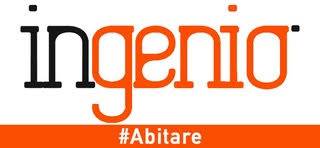IMPLEMENTATION of ADVANCED BIM-BASED MAPPING RULES for AUTOMATED CONVERSIONS to MODELICA
Proceedings of BS2015: 14th Conference of International Building Performance Simulation Association, Hyderabad, India, Dec. 7-9, 2015
IMPLEMENTATION OF ADVANCED BIM-BASED MAPPING RULES FOR AUTOMATED CONVERSIONS TO MODELICA
R. Wimmer1 , J. Cao1 , P. Remmen2 , T. Maile1 , J. O’Donnell3 , J. Frisch1 , R. Streblow2 , D. Müller2 , C. van Treeck1
1 RWTH Aachen University, Institute for Energy Efficient Building (E3D), Aachen, Germany 2 RWTH Aachen University, E.ON Energy Research Center (EBC), Aachen, Germany 3 School of Mechanical and Materials Engineering and Electricity Research Centre, University College Dublin, Dublin, Ireland
ABSTRACT
To address coming and forthcoming regulations for the reduction of energy use in the building sector, it is necessary to manage the complexity of buildings via flexible simulation tools. Modelica represents an object-oriented, equation-based programming language for detailed dynamic simulation purposes across different industries. This kind of simulation requires data at a high level of detail. Building Information Modelling (BIM) represents a data management tool for the whole life cycle of a building and can be used as input platform for simulation tools like Modelica, provided that tools for transformation of the 'BIM logic' into the logics of object oriented simulation exist. This paper is part of a project which aims to connect BIM with Modelica. During this course, the project defines mapping rules for integrating BIM within the process of Modelica code generation while supporting multiple modelling libraries with the purpose of developing an automated conversion process. This paper focuses on the consistency of the existing mapping rules and proposes various extensions by enabling an interface between BIM and different Modelica libraries.
INTRODUCTION
The integration of simulation tools within a BIMoriented planning environment is a promising approach to handle sophisticated projects (Eastman, 2011; van Treeck and Rank, 2007). For this purpose, the object-oriented, equation-based programming language Modelica offers a flexible structure to perform sophisticated Building Energy Performance Simulation (BEPS), especially when it comes to advanced energy systems. A solution to integrate multiple Modelica libraries via a single interface into the BIM environment – based on the rigidly defined data format IFC – does not yet exist in a generic way. The use of the Industry Foundation Classes (IFC) enables interoperability throughout the design process and provides information of the project for all experts (Building Smart Alliance, 2014). Several studies analyse the integration of Modelica into a BIM-related environment. Jeong et al. (2014) developed a method to couple a BIM platform with Modelica by using the platform’s internal proprietary data model. Furthermore, Hua (2014) developed a general approach of coupling IFC with Modelica. Each of these two different projects realises the connection by supporting a single Modelica library only, while IFC objects and attributes are mapped to the corresponding Modelica objects and parameters in a straightforward manner, representing a static connection between the two data sets. Consequently, this approach is sensitive to changes in the used Modelica library. Furthermore, the aforementioned research projects do not include any HVAC-systems, which represents the core interest of the research at hand. In prior work, an approach to integrate Modelica into the BIM environment was developed by using the non-proprietary data exchange format SimModel (O'Donnell et al., 2011). SimModel aligns closely to IFC and is especially developed for the purpose of energy related simulations, focussing on the simulation of HVAC-systems. In this approach, socalled mapping rules are the basis for data conversion. For development purposes and as a first test, the mapping rules have been applied to a generic use case and a single Modelica library (Wimmer et al., 2014b; Cao et al., 2014). The first implementation of the mapping rules acted as test to prove the concept. As a result, these rules provide the necessary functionality to connect SimModel to Modelica, but need further adjustments, referring to the definition of different rules. Furthermore, the mapping rules need to prove that this concept enables an interface between BIM and multiple Modelica libraries. The next steps consist of using different libraries with additional complex use cases. Thus, this paper describes the usage of the original six mapping rules by linking SimModel to several Modelica libraries and applies different use cases. These steps are necessary to improve the mapping rules and to enable a specialised interface between IFC and multiple Modelica libraries. The paper describes as well the actors who need to provide expert knowledge to handle mapping rules. Two actors are relevant to apply the mapping rules: the first actor is responsible to provide his expertise in the SimModel data model, whereas the second actor knows the details of the targeted Modelica library and is responsible for the simulation.
>>> READ THE PROCEEDING --->
